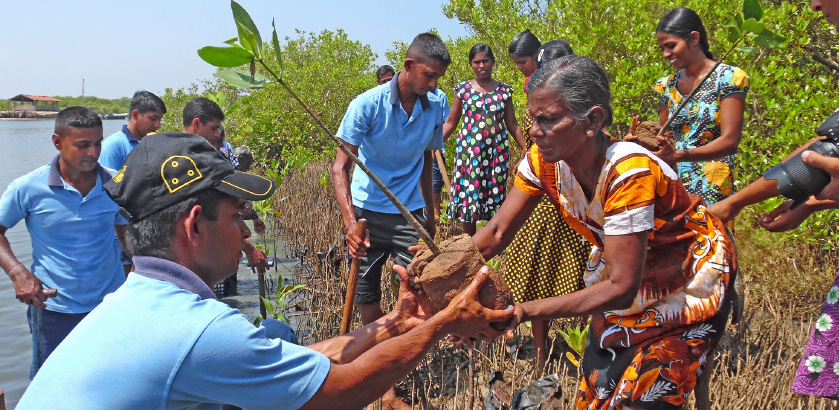Today (15 March) we celebrate 12 innovative projects spanning Africa and Asia which have the potential to revolutionise how the world’s most at-risk communities tackle the devastating consequences of flooding.
The Water Window Challenge, a partnership between the Global Resilience Partnership (GRP) and the Z Zurich Foundation of Zurich Insurance, awards grants of up to US$1million to teams offering innovative solutions to flood-related issues affecting communities in the Sahel, Horn of Africa and South and Southeast Asia.
For something that we use every day, and depend on for life, it’s strange that humanity has always had such a troubled relationship with water: there’s either not enough, too much, or it’s in the wrong place. Water is a dynamic resource, but rather than try to work with this dynamism, we have continually tried – and mostly failed – to control water.
During the last two decades, flooding has adversely affected 2.3 billion people. Almost 87% of money was spent post-event: on emergency response, reconstruction and rehabilitation. It’s not that we haven’t made great inroads in developing disaster risk reduction and management (DRR-DRM) approaches. With global agreements like the Sendai Framework, we have made solid steps in the right direction, towards preparedness and mitigation, towards building back better as opposed to just building back.
But we must go deeper. Perhaps, thirty years ago, linear types of thinking, where A led to B led to C, were working. These days, with such complex global interactions, new and varied shocks, protracted crises, we can see that the typical linear problem-solution construct just isn’t working. It doesn’t deal with the complexity we now see at work in the world. Persisting in this disaster-recover-repeat cycle is either a form of (very) costly arrogance, or extreme naivety.
I believe that we must change this. We must become a world where disasters are pre-empted, before livelihoods are washed away and lives are lost. This is why GRP challenges innovators from across the globe to find out-of-the-box solutions that can make a huge difference, at large scale quickly. It is hugely encouraging that the Water Window Challenge received almost 400 entries, whittled down to a final 12 that showed the greatest potential to deliver real change.
The Challenge demonstrates that there is no one way to tackle these issues – rather there are hundreds of ways to build resilience that can collectively change the way we think about flood prevention.
Successful teams span the globe, with winners from North America, Europe, South and Southeast Asia, and the Horn of Africa. They will tackle issues on the ground in Indonesia, Vietnam, the Philippines, Bangladesh, India, Sri Lanka, Nepal, Kenya, Ethiopia and Somalia. Solutions range from water-resilient roads to amphibious homes and protective coastal greenbelts.
The project teams themselves are diverse – including academics and teams on the ground who have used their own experience and indigenous knowledge to find solutions to recurring flood-related problems.
What sets the Water Window Challenge apart from other initiatives is that we are not afraid of failure. Some of these initiatives may not work out as planned when implemented, and that is OK. However, those demonstrating real promise will be scaled rapidly to benefit as many millions as possible. We will not find real solutions unless we are willing to try new things. This entrepreneurial mindset is often missing from aid spending. The Challenge is a model in which it is championed.
For decades, billions of dollars have been spent on flood recovery. It is our aim through this Challenge to discover solutions which provide prevention rather than cure – resilience over recovery.
We must be bold, brave and quick when tackling the risk that flooding poses across the globe. The costs are far too high for anything else.
